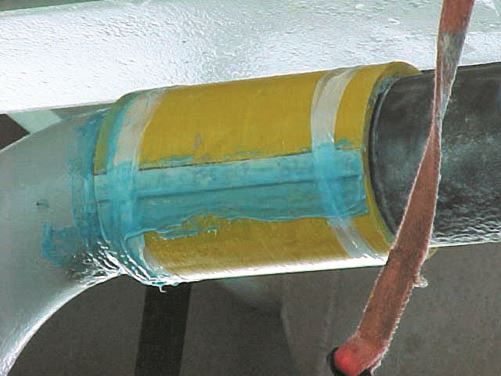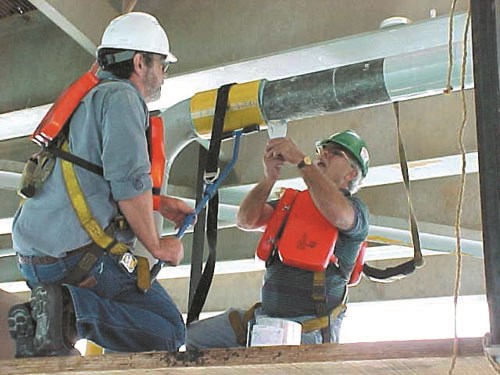Pre-Cured Sleeves For High-Pressure Pipes
Clock Spring is one of several composite wrap approaches developed by inventor Norman C. Fawley of NCF Industries Inc. (Santa Maria, Calif., U.S.A.). The concentrically-coiled, glass fiber-reinforced polyester composite sleeve was devised with support from the Gas Technology Institute and the gas pipeline indu
Share
Clock Spring is one of several composite wrap approaches developed by inventor Norman C. Fawley of NCF Industries Inc. (Santa Maria, Calif., U.S.A.). The concentrically-coiled, glass fiber-reinforced polyester composite sleeve was devised with support from the Gas Technology Institute and the gas pipeline industry in the U.S. as a permanent repair for pressurized pipes ranging from 4 to 48 inches/102 mm to 1.2m in diameter.
To prepare the kits, the company impregnates 12 inch/305 mm wide continuous unidirectional stitched E-glass reinforcement with isophthalic polyester resin from Ashland Specialty Chemical Co. (Columbus, Ohio, U.S.A.) and shapes the fibers around appropriately sized circular mandrels. The composite coils are oven-cured at 250°F/120°C for a minimum of 12 hours with a resulting 70 percent fiber volume by weight. Prior to application of the eight-layer coiled sleeve, the metal pipe is first cleaned, then the defect is filled with a high compressive strength (approximately 8,000 psi/55 MPa) methacrylate filler to transfer load and ensure the sleeve contacts the pipe around the entire circumference. The composite sleeve is then applied with a methacrylate adhesive, which cures in approximately two hours.
Clock Spring is designed for hoop strength only and provides limited resistance to axial loads. Typical measured tensile strength of the fiberglass/polyester laminate is about 90 ksi/620 MPa in the hoop direction and 4 ksi/28 MPa in the axial direction at 72°F/22°C, according to the company. Maximum wet service temperature for the standard sleeve and adhesive product is 130°F/54°C; a higher temperature version — 180°F/80°C — is also available. To accommodate the difference in coefficient of thermal expansion (CTE) between the metallic pipe and the fiberglass, the adhesive is extremely ductile to allow differential movement.
A protective coating is recommended to protect the repair against ultraviolet damage, if exposed to sunlight. For pipe defects longer than 12 inches, two or more sleeves can be butted together. Long-term stress rupture tests conducted on the patch show that the Clock Spring repair can last up to 50 years. U.S. DOT approval was received in January 2000. Amoco, Chevron, Conoco and Exxon have all used the Clock Spring repair method for offshore pipelines and steel risers.
Related Content
-
Film adhesive enables high-temperature bonding
CAMX 2024: Aeroadhere FAE-350-1, Park Aerospace’s curing modified epoxy, offers high toughness with elevated temperature performance when used in primary and secondary aerospace structures.
-
XlynX Materials BondLynx and PlastiLynx for low surface energy PP, PE substrates
Award-winning Xlynx materials use breakthrough “diazirine” technology to boost bond strength up to 950% as adhesives, primers and textile strengtheners.
-
Pro-Set named official materials supplier for New York Yacht Club American Magic
Competitive sailing team prepares for the 37th America’s Cup beginning in August 2024 with adhesives, resins and laminate testing services for its AC75 monohull construction.










